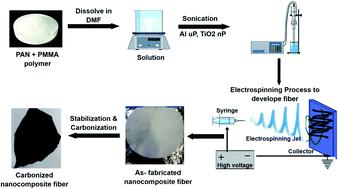当前位置:
X-MOL 学术
›
Nanoscale Adv.
›
论文详情
Our official English website, www.x-mol.net, welcomes your
feedback! (Note: you will need to create a separate account there.)
A highly efficient fog harvester of electrospun permanent superhydrophobic–hydrophilic polymer nanocomposite fiber mats
Nanoscale Advances ( IF 4.6 ) Pub Date : 2020-08-26 , DOI: 10.1039/d0na00529k Md. Nizam Uddin 1, 2, 3, 4 , Fenil J. Desai 1, 2, 3, 4 , Muhammad M. Rahman 1, 2, 3, 4 , Ramazan Asmatulu 1, 2, 3, 4
Nanoscale Advances ( IF 4.6 ) Pub Date : 2020-08-26 , DOI: 10.1039/d0na00529k Md. Nizam Uddin 1, 2, 3, 4 , Fenil J. Desai 1, 2, 3, 4 , Muhammad M. Rahman 1, 2, 3, 4 , Ramazan Asmatulu 1, 2, 3, 4
Affiliation

|
To address the worldwide issue of water scarcity, which is threatening our sustainable economic development and ecological security, an efficient water-collecting surface with fast-capturing capability and easy drainage is essential. Inspired by the fog-harvesting capability of Stenocara beetles in the Namib Desert, this study presents an easy method for fabricating flexible, permanent, electrospun superhydrophobic–hydrophilic polyacrylonitrile (PAN) and poly(methyl methacrylate) (PMMA) nanocomposite fiber mats for atmospheric fog water harvesting. This combination of a hydrophobic PAN domain and hydrophilic nanomaterials causes water to condense on the hydrophilic micro and nanoparticles and roll off the hydrophobic nanofibers. By adjusting the proportion of micro and nanomaterials, we can tune the fog water harvesting efficiency. The superhydrophobic–hydrophilic nanocomposite fibers are fabricated with various proportions of titanium dioxide (TiO2) nanoparticles and aluminum (Al) microparticles using the electrospinning technique followed by stabilization and carbonization to remove all non-carbonaceous materials from the fiber structures. The fiber morphology, surface hydrophobicity, crystal structure, and fog-harvesting performance of the nanocomposite fibers were investigated. A water contact angle of 154.8° was achieved with the addition of a 10% inclusion of combined micro- and nanoparticles. The experimental tests of these nanocomposites demonstrated the feasibility of the freshwater production with a daily water productivity of more than 1.49 liter m−2 of the nanocomposites. It is estimated that the material cost of making such nanocomposites to supply minimum daily water consumption for a household with 2 members (i.e., 6 liters) is only $4.96 (USD). These nanocomposites are cheap and affordable, and require no additional input of energy, and are especially suitable for clean water production in arid areas. This work offers a very feasible and novel tool to achieve the mass production of water-harvesting materials.
中文翻译:

电纺永久超疏水-亲水聚合物纳米复合纤维毡的高效除雾器
为了解决威胁我们可持续经济发展和生态安全的全球水资源短缺问题,具有快速捕获能力和易于排水的高效集水表面至关重要。受Stenocara的除雾能力启发纳米比亚沙漠中的甲虫,这项研究提出了一种容易的方法,用于制造用于大气雾水收集的柔性,永久性的静电纺超疏水亲水聚丙烯腈(PAN)和聚甲基丙烯酸甲酯(PMMA)纳米复合纤维垫。疏水性PAN域和亲水性纳米材料的这种结合使水凝结在亲水性微米颗粒和纳米颗粒上,并从疏水性纳米纤维上滑落下来。通过调整微米和纳米材料的比例,我们可以调整雾水的收集效率。超疏水-亲水性纳米复合纤维是用不同比例的二氧化钛(TiO 2纳米粒子和铝(Al)微粒使用电纺丝技术,然后进行稳定化和碳化处理,以从纤维结构中去除所有非碳素材料。研究了纳米复合纤维的纤维形态,表面疏水性,晶体结构和除雾性能。通过添加10%的微粒和纳米颗粒结合物,水接触角达到154.8°。这些纳米复合材料的实验测试证明了每日水生产率超过1.49升m -2的纳米复合材料生产淡水的可行性。据估计,制造这种纳米复合材料的材料成本是为有2名成员的家庭提供最低的日常用水量(即(6升)仅售4.96美元(美元)。这些纳米复合材料价格便宜,价格适中,并且不需要额外的能量输入,特别适合在干旱地区生产清洁水。这项工作为实现集水材料的大规模生产提供了一种非常可行和新颖的工具。
更新日期:2020-10-13
中文翻译:

电纺永久超疏水-亲水聚合物纳米复合纤维毡的高效除雾器
为了解决威胁我们可持续经济发展和生态安全的全球水资源短缺问题,具有快速捕获能力和易于排水的高效集水表面至关重要。受Stenocara的除雾能力启发纳米比亚沙漠中的甲虫,这项研究提出了一种容易的方法,用于制造用于大气雾水收集的柔性,永久性的静电纺超疏水亲水聚丙烯腈(PAN)和聚甲基丙烯酸甲酯(PMMA)纳米复合纤维垫。疏水性PAN域和亲水性纳米材料的这种结合使水凝结在亲水性微米颗粒和纳米颗粒上,并从疏水性纳米纤维上滑落下来。通过调整微米和纳米材料的比例,我们可以调整雾水的收集效率。超疏水-亲水性纳米复合纤维是用不同比例的二氧化钛(TiO 2纳米粒子和铝(Al)微粒使用电纺丝技术,然后进行稳定化和碳化处理,以从纤维结构中去除所有非碳素材料。研究了纳米复合纤维的纤维形态,表面疏水性,晶体结构和除雾性能。通过添加10%的微粒和纳米颗粒结合物,水接触角达到154.8°。这些纳米复合材料的实验测试证明了每日水生产率超过1.49升m -2的纳米复合材料生产淡水的可行性。据估计,制造这种纳米复合材料的材料成本是为有2名成员的家庭提供最低的日常用水量(即(6升)仅售4.96美元(美元)。这些纳米复合材料价格便宜,价格适中,并且不需要额外的能量输入,特别适合在干旱地区生产清洁水。这项工作为实现集水材料的大规模生产提供了一种非常可行和新颖的工具。











































 京公网安备 11010802027423号
京公网安备 11010802027423号